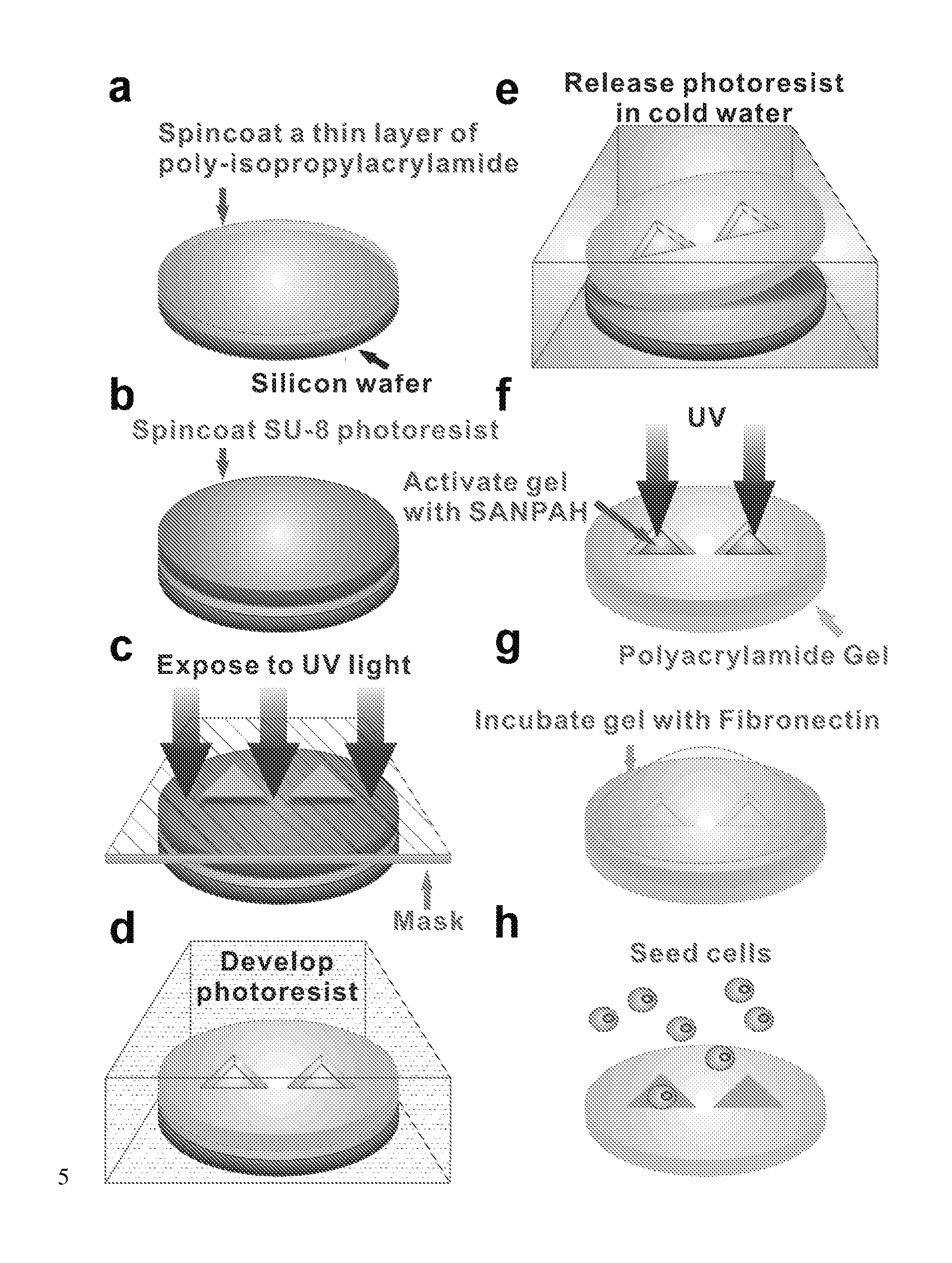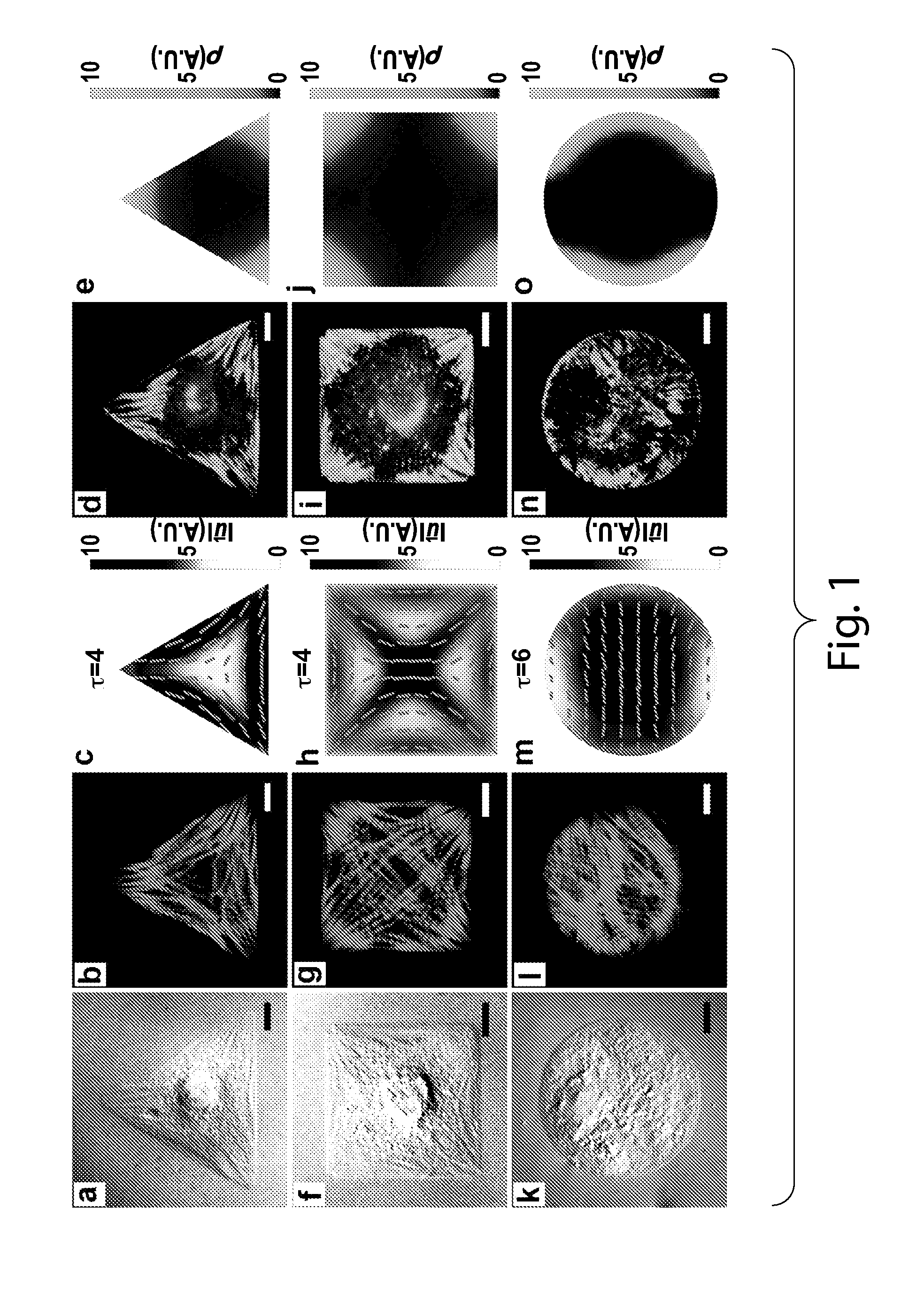Methods of generating patterned soft substrates and uses thereof
- Summary
- Abstract
- Description
- Claims
- Application Information
AI Technical Summary
Benefits of technology
Problems solved by technology
Method used
Image
Examples
example 1
Self-Assembly and Organization of Muscle Cells
[0117]It was hypothesized that the spatial arrangement of mature myofibrils can be achieved in principle via two temporally ordered, mutually interacting mechanisms. The first mechanism, occurring on the scale of seconds to minutes, involves stress fiber synthesis and formation of their anchoring focal adhesions (FAs), and provides a structural basis for premyofibril assembly. This mechanism is sensitive to spatial cues imposed on cellular boundary conditions and is herein referred to as the extrinsic process. The second mechanism is a slower intrinsic process, where adjacent premyofibrils preferentially align in parallel over a time scale of hours. It is proposed here that the temporal differences between the extrinsic and intrinsic mechanisms establish a hierarchy amongst these processes that govern the organization of the contractile cytoskeleton.
[0118]To test this hypothesis, a theoretical model was developed that broadens the spatia...
PUM
| Property | Measurement | Unit |
|---|---|---|
| Pressure | aaaaa | aaaaa |
| Stiffness | aaaaa | aaaaa |
Abstract
Description
Claims
Application Information
 Login to View More
Login to View More - R&D
- Intellectual Property
- Life Sciences
- Materials
- Tech Scout
- Unparalleled Data Quality
- Higher Quality Content
- 60% Fewer Hallucinations
Browse by: Latest US Patents, China's latest patents, Technical Efficacy Thesaurus, Application Domain, Technology Topic, Popular Technical Reports.
© 2025 PatSnap. All rights reserved.Legal|Privacy policy|Modern Slavery Act Transparency Statement|Sitemap|About US| Contact US: help@patsnap.com



